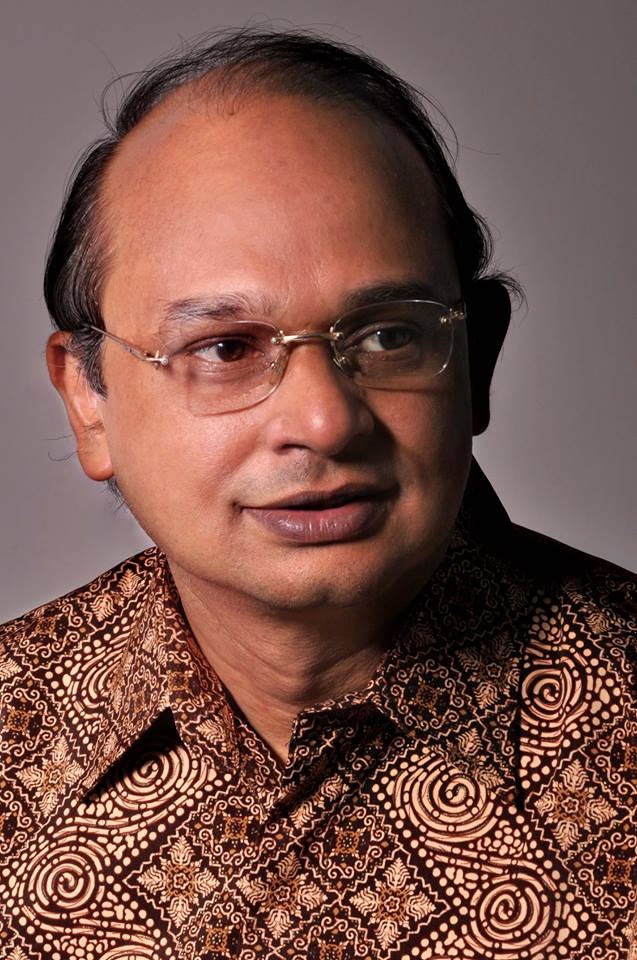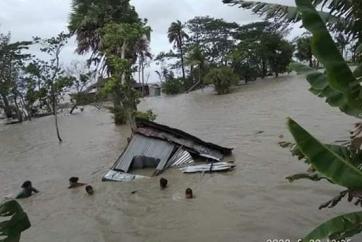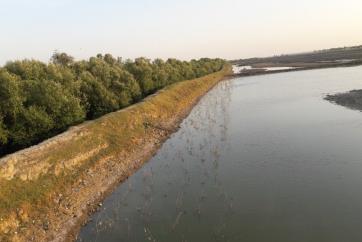Forest people around the Sundarbans have been giving an all-out effort to protect their mother forest from destruction. Abdur Rahman goes deep into the forest in mid-April every year. He as well his companions cut a specific section (about two thirds) of honeycomb and leave the rest for reproduction. It is done in order to ensure that no young bees are killed while collecting honey and squeezing beehives by hand. Mowals (Honey collectors) never use metal tools that may be dangerous to bees. They produce smoke using dry leaves but never put fire on the beehive.
Jalil Mia, who earns his livelihood by collecting Golpata (Nypa fruticans) from the forest, maintains some customary rules during his collection. Exploitation in any area is not allowed more than once a year, specifically during the June-September period as it is the growing period of Golpata. They cut only the leaves that are approximately nine feet long and they are cut in a way so that the central leaf and the leaf next to it in each clump are retained. They maintain this rule so that the flowers and fruits are kept undisturbed while cutting leaves.
Ambia Khatun, a hard-working middle-aged woman, goes fishing in the Shakbaria river just like her male counterparts. She is one of the prime contributors in her family, as many other women of her community are. Traditional fishermen never use pernicious nets like “Bishal Jal” that kill carps of fish. She is afraid of catching fewer fish than before, because of the incessant use of forbidden nets being indirectly allowed by local authorities.
The Munda indigenous community, which came to the Sundarbans region about three hundred years ago, has been collecting resources from the Sundarbans following sustainable customary knowledge. For several years, they have been utilizing the obtained customary knowledge for alternative livelihood options such as crab culture. Abhishek Munda, 34, supports his family with the earning from crab culture on his own land. Like him, other Munda people are also producing goods on their own lands to reduce reliance on the forest. “Pressure on the forest should be minimized. We have to protect it. This feeling made us divert into other activities that would help contribute to conserving the resources of the forest,” Joydeb Munda opines. It is worth mentioning that they have been able to regain 42 bighas of their legally owned land, which had been confiscated by the wealthy class, through constant negotiation and pressure. The bigha is a traditional unit of measurement of land area commonly used in India, Bangladesh, and Nepal.
These conservation activities were fuelled after communities unified and formed cooperatives comprising around 350 households. Unnayan Onneshan helped set up Harinagar Bonojibi Bohumukhi Unnayan Samity (Harinagar Forest People Multipurpose Development Cooperative), Koyra Bonojibi Bohumukhi Unnayan Samity (Koyra Forest People Multipurpose Development Cooperative) and Munda Adivasi Bonojibi Bohumukhi Unnayan Samity (Munda Indigenous Forest People Multipurpose Development Cooperative), aiming at capacity building in alternative livelihood options, meeting universal basic needs and claiming cooperative rights through conservation of nature.
Forest people of the Sundarbans have already experienced the positive outcomes of rigorous cultivation outside the forest through a reduced severity of impacts caused by natural calamities. The reduced severity of the recent super cyclone Amphan, is an epitome in this regard. Moreover, their other customary rules and knowledge have proven to be sustainable for many years. Nevertheless, they still greatly struggle to receive the necessary assistance from the government. A huge number of shrimp enclosures and croplands have been inundated due to super cyclone Amphan, worth Tk 100 crore (equal to 1 billion rupees) in the Koyra Upazila where a large number of indigenous peoples live. Due to being hit by constant natural calamities and the current COVID-19 pandemic, these communities should receive financial support along with the assurance of universal basic needs for their survival.
Alongside their male counterparts, Anju Ara, Jamila and other female traditional resource users have been struggling and initiating movements driven by awareness, in order to change institutional rules and law enforcement for alternative livelihood options through the conservation of nature. These traditional resource users can contribute to protecting the Sundarbans in an ample manner if their Indigenous Local Knowledge (ILK) is taken under consideration and enforced thereby. “If the government utilized our traditional rules and practices in the formal conservation process, the Sundarbans would be safer than the current reality and people would gain their desired sustainable well-being”, Khalil Dhali concludes.
About the author

Dr Rashed Al Mahmud Titumir, a Professor of Economics at the Department of Development Studies at the University of Dhaka, is Chairperson of the think-tank, the Unnayan Onneshan (an IUCN Member). He is also the Chairperson of the IUCN National Committee of Bangladesh. rt@du.ac.bd






